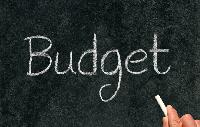

The government in any economy is like a superman. Its role is important to regulate, guide, and promote economic activities. For all these functions, the government conducts various schemes and programmes for the entire economy. Similarly, to finance such government activities, there are many taxes and other types of revenues for the government.
If these revenues (both taxes and non tax revenues) are not enough, a government resorts to borrowings to finance its activities.
Here comes the concept of fiscal deficit. Fiscal deficit indicate the excess of government expenditure over receipts except borrowing.
Before describing fiscal deficit in detail, we should have few other basic concepts as well.
Sometimes we may misunderstand that the two important items there in the budget are total expenditure and total revenue.
No, rather the two items are total expenditure and total receipts. In a budget these two items will be set equal.
Regarding total expenditure, we know that all expenditures of the government during a year come under it. But in the case of total receipts we should carefully identify various components of it – tax revenues, non tax revenues, loan repayment to the government, disinvestment revenues and borrowings by the government.
It is easy to recognise that borrowing can be termed as a receipt, but it is not revenue for the government. Thus, the term total receipt is used rather than total revenue to include borrowing.
So …, in the budget:
Total expenditure = Total receipts (tax, non tax, disinvestment, borrowings etc)
The term fiscal deficit is defined as all expenditure minus all receipts except borrowings.
Fiscal deficit = Total Expenditure – Total Receipts except borrowings.
Take an example:
Total expenditure = Rs 100
Total receipts = Rs 100 (including borrowings of Rs 20)
Fiscal deficit = Total Expenditure– total receipts except borrowings.
= 100- (100-20)
=Rs 20
This means that fiscal deficit will be equal to borrowings of the government. To clarify this, you go to the budget 2015-16. Take the table given by the FM under the head Budget at a Glance. On that table, there will be an item No 7 that is borrowings. Its value is Rs 555649. Similarly, go to item No. 22; that is Fiscal Deficit. Its value is Rs 555649.
Once more, fiscal deficit is defined as all expenditure minus total receipts except borrowings. Actually, fiscal deficit represents the total borrowing requirements of the central government. Most importantly, fiscal deficit indicate the financial health of the budget and that of the government. Higher fiscal deficit thus becomes a matter of concern. On the other hand, a manageable fiscal deficit is a welcome sign.
*********









